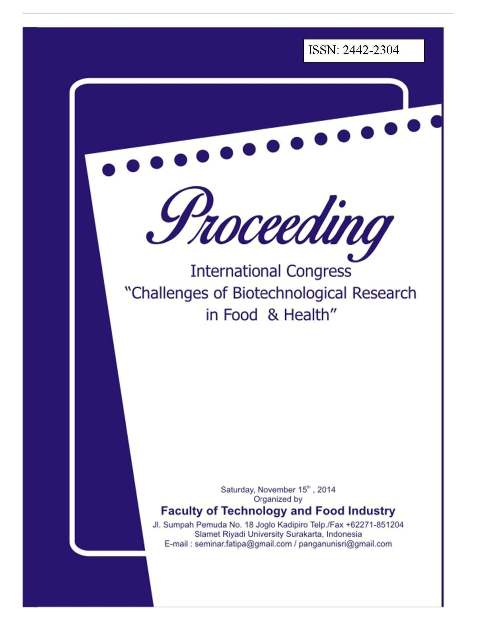CHEMICAL AND FREE FATTY ACID COMPOSITION OF GOAT MILK CHEESE RIPENED WITH Lactobacillus acidophilus AND EXTRACT RABBIT STOMACH AS COAGULANT
Abstract
Rabbit stomach is waste from rabbit slaughtering that has the potential to be used as an alternativesource of rennet for cheese production. The purpose of this study was to determine the effect of ripening
by using Lactobacillus acidophilus on the chemical composition and free fatty acids (FFA) profile of
goat milk cheese with extract of rabbit stomach as coagulant. Lactobacillus acidophilus (1%) was inoculated
into pasteurized goat milk and incubated for 1 h, rennet extract up to 3% was added and incubated
for 25 min. Cheese was stored at 4οC for 42 d. The moisture, fat, protein and ash content were
analyzed at day 0, 21 and 42, whereas the FFA of goat milk cheese were analyzed on day 0 and 42. There
were significantly differences in the moisture, protein, and ash content in the goat milk cheese on 21 and
42 days of ripening, but there was no significant difference in the fat content. The longâ€chain saturated
(C16:0 and C18:0) and unsaturated (C18:2) FFA were the most abundant in goat milk cheese, and there
were no significant differences between pre or post ripening. The concentration of short chain fatty
acid (C6:0, C8:0 and C10:0) and the overall concentration of FFA in goat milk cheese after 42 days ripening
was higher compared to those preâ€ripening.
Keywords: Chemical composition, Free fatty acid, Goat milk cheese, Rabbit stomach
Downloads
Published
2015-04-01
Issue
Section
Artikel

